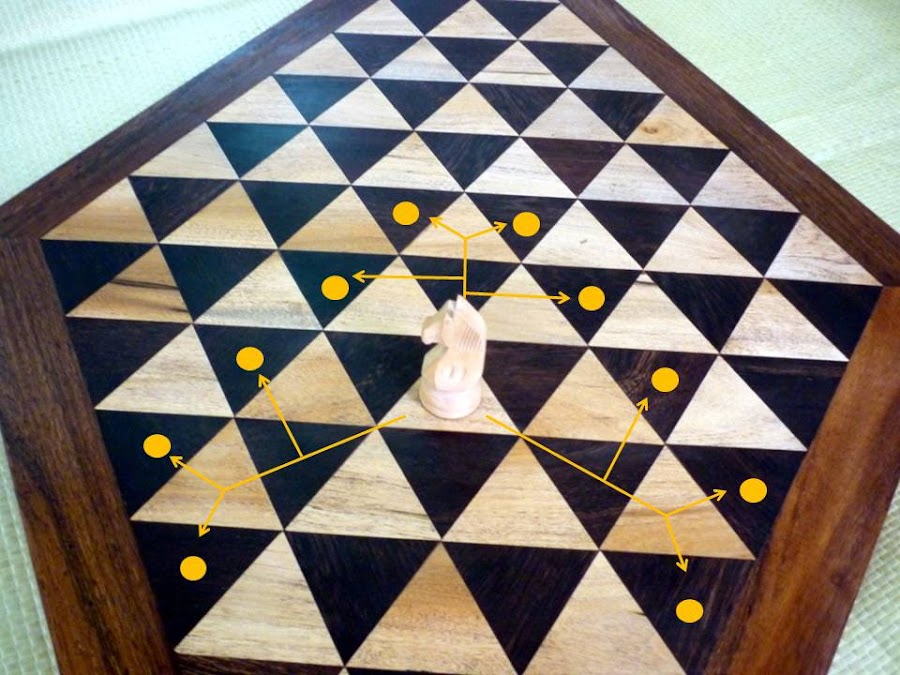_______________________________________________________
Piece Movements
As the shape of the board is composed of triangles, rather than squares, the movement patterns for the various pieces have needed to be modified so that they can cope with the new style.
Pawns
Pawns are naturally the weakest pieces on the board, and the most
limited in their options for movement and capturing other pieces. As
with standard chess, they may only move forward, and must capture pieces
moving diagonally. Also like standard chess, if a pawn reaches the
opposite side of the board, it may be queened and gains all the movement
and capturing properties of a Queen piece.

Knight
Knights have the most interesting movement properties of any piece on
the board, as they must move parallel to their edges and in an L
pattern. In addition, they are not blocked in their movement by other
pieces, as long as their final destination is either free, or occupied
by an enemy piece, at which point they capture it.
Rook
Similar to their counterparts in standard chess, Rooks are the guardians
of the edges of the board, and must move in straight lines parallel to
the edges of their triangle. Like standard chess, if the spaces between a
Rook and the King are free, and they have not moved, then the King may
swap places with the Rook in a move called "Castling".

Bishop
Bishops are similar to Rooks in the way they move, however, they must
instead move in line with the points of whatever triangle they occupy,
which is the equivalent of diagonal movement in a triangular chess
board. This is somewhat clearer when observed in a diagram.
Queen

King
 It’s
the most vital piece in triangular chess. If your King is captured by
another piece, then the game is over for your side. When a player
threatens another player's piece with theirs, they must announce that
they have put that player into "Check". At which point the player must
attempt to find a move which causes their King to become unthreatened.
In addition, unlike standard chess, since there is a third party's turn
in between "Check" and potential "Checkmate", there are rare occasions
where a player's King may be taken out of threatened status before their
turn even arrives. As mentioned previously, Kings may "Castle" with
Rooks if their paths are unobstructed and neither has moved.
It’s
the most vital piece in triangular chess. If your King is captured by
another piece, then the game is over for your side. When a player
threatens another player's piece with theirs, they must announce that
they have put that player into "Check". At which point the player must
attempt to find a move which causes their King to become unthreatened.
In addition, unlike standard chess, since there is a third party's turn
in between "Check" and potential "Checkmate", there are rare occasions
where a player's King may be taken out of threatened status before their
turn even arrives. As mentioned previously, Kings may "Castle" with
Rooks if their paths are unobstructed and neither has moved.

